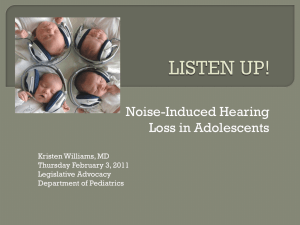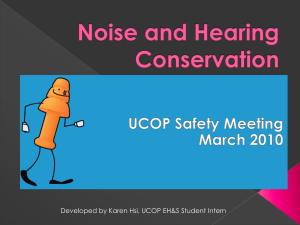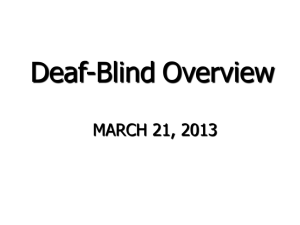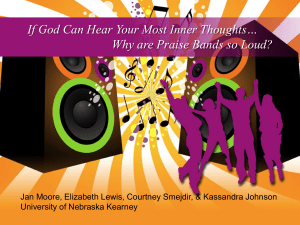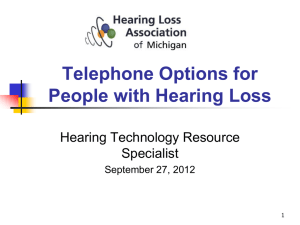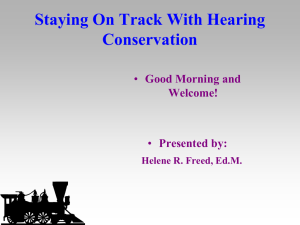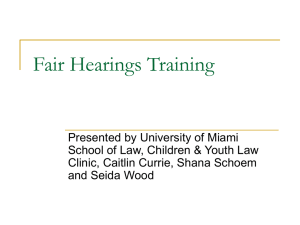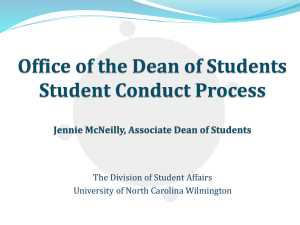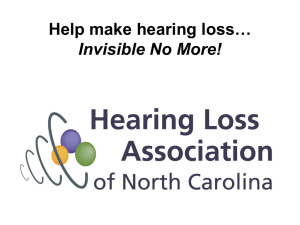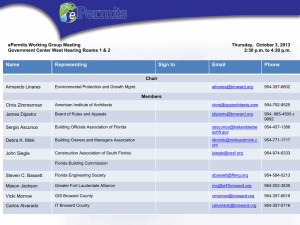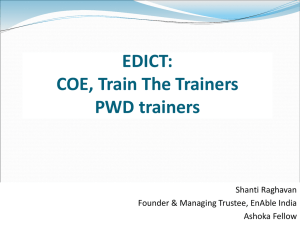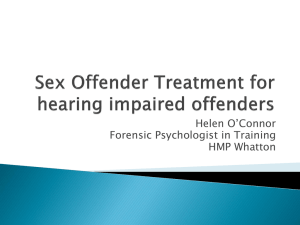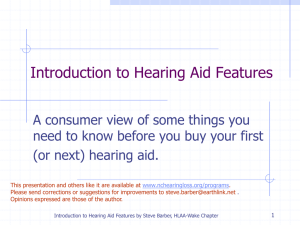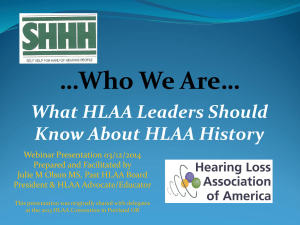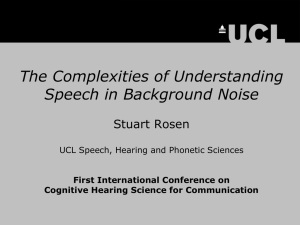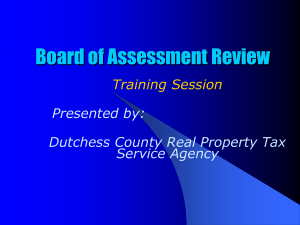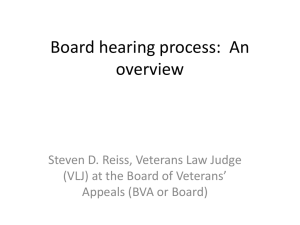Lesson 1.3 The Aftermath: Hearing Loss
advertisement
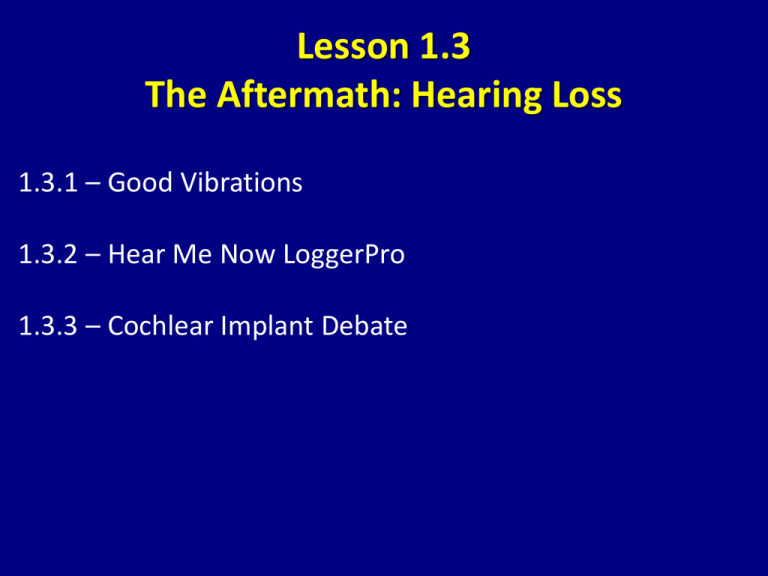
Lesson 1.3 The Aftermath: Hearing Loss 1.3.1 – Good Vibrations 1.3.2 – Hear Me Now LoggerPro 1.3.3 – Cochlear Implant Debate Lesson 1.3 The Aftermath: Hearing Loss As we continue to follow Sue Smith we learn that she is still dealing with the aftermath of her bacterial meningitis infection. The antibiotics eliminated the infection and Sue made a full recovery Although Sue has not noticed any symptoms of hearing loss, she has scheduled an appointment to have her hearing evaluated due to the high incidence of hearing loss in patients who have recovered from meningitis. In this lesson you will: • Investigate the physics of sound • Learn how hearing works • Conduct a variety of hearing assessments Lesson 1.3 The Aftermath: Hearing Loss Lesson Overview You will be assigned a patient with a specific type of hearing loss. Using the assigned patient case study you will: • Explore how damage to the outer, middle, and/or inner ear results in hearing loss • Learn how to interpret audiograms and match up their patient case study with the corresponding audiogram • Use what you have learned to make a recommendation as to what intervention is the most appropriate for the patient case study • Investigate both sides of the cochlear implant debate Lesson 1.3 The Aftermath: Hearing Loss Hearing loss affects millions of people in the United States Hearing loss can drastically impact a person’s ability to communicate A significant amount of time and money has been invested into research to develop interventions to treat hearing loss Although the degree of hearing loss varies from individual to individual, there are only three types of hearing loss: 1) Sensorineural hearing loss 2) Conductive hearing loss 3) Mixed hearing loss Lesson 1.3 The Aftermath: Hearing Loss Understandings Problems with one or more structures within the ear cause various types of hearing loss. There are a variety of interventions available to help people with hearing loss. Lesson 1.3 The Aftermath: Hearing Loss Knowledge and Skills It is expected that students will: • Identify the structures of the ear and describe their function in hearing. • Describe the pathway of sound vibrations from the time a sound is generated to the time the brain registers the sound. • Recognize that there are bioethical concerns and considerations related to the use of cochlear implant technology. • Demonstrate sensorineural versus conductive hearing loss on a model of the ear. • Perform several simple tests, such as Rinne Test and the Pure Tone Test, to evaluate hearing. • Interpret audiograms to identify different types of hearing loss. • Recommend the most appropriate type of intervention for a patient with hearing loss, given the patient’s audiogram. Lesson 1.3 The Aftermath: Hearing Loss Essential Questions 1) How do frequency and amplitude affect how humans interpret sound? 2) What causes different types of hearing loss? 3) How is hearing loss diagnosed? 4) What interventions are available for patients with hearing loss? 5) What are the bioethical concerns related to the use of cochlear implant technology? Lesson 1.3 The Aftermath: Hearing Loss KEY TERMS Crossword Puzzle Activity 1.3.1 - Good Vibrations 1.3.1.A GoodVibrations 1.3.1.A.SR StudentResourceSheet Activity 1.3.1 - Good Vibrations Status of Sue Smith • Bacterial meningitis infection was quickly diagnosed and treated • The antibiotics eliminated the infection • Made a full recovery • Returned to school • Began practicing with the soccer team again Two months have passed since her initial diagnosis • Sue’s primary care physician has given her a clean bill of health • The physician recommended having her hearing checked • The physician explains that although Sue has not noticed any symptoms of hearing loss, the incidence of hearing loss in patients who have recovered from meningitis is very high • Sue has scheduled an appointment with an audiologist, a healthcare professional specializing in treatment of patients with hearing loss and related disorders. Activity 1.3.1 - Good Vibrations In this activity you will: • Investigate the physics of sound • Learn how hearing works and what can go wrong in the ear that causes different types of hearing loss • You will be assigned a patient with a specific type of hearing loss and will show the cause of the hearing loss on a model of the ear

